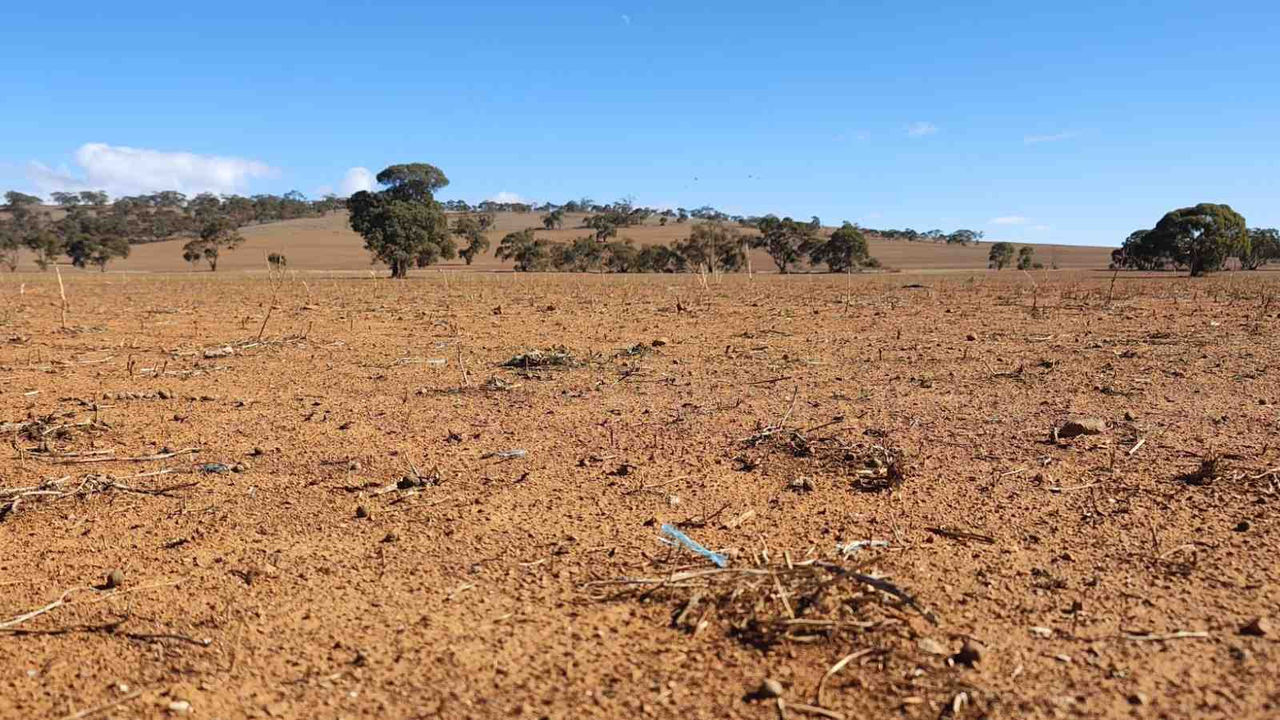NAB Foundation backs Rural Aid and drought affected farmers
11.06.2025
Published on 27.11.2025
NAB will take a balanced approach to climate transition plans, supporting the development of credible decarbonisation strategies through deeper relationships and sectoral insights.
The climate reports of banks and other providers of finance continue to be heavily scrutinised, as subtle differences emerge in the treatment of high-emitting and hard-to-abate sectors and companies.
Rodney Wallis, Executive Client Coverage Corporate and Institutional Bank (C&IB), said NAB acknowledged that the transition looked different from customer to customer and sector to sector, and this would continue to be the case as technology evolved.
“We’re not trying to dictate to customers what a NAB worldview of ‘great’ looks like, but a level of formality and rigor is essential to drive transparency and decision-making.” Mr Wallis said.
“Everyone understands a huge amount of capital is required for the transition, so we’ve got to allocate it in a sensible, measured and disciplined way to ensure we can say hand-on-heart that a transition plan is credible.”
“It’s about better understanding our customers, what their plans are and what progress they’re making – while also being clear on our own views on what credible looks like.”
While divestment and other strict measures have won favour among some advocacy groups and institutions, former Bank of England governor Mark Carney urged Australian investors in 2021 to “go where the emissions are” if they wanted to help with the climate transition and make a difference.
The balanced approach adopted by NAB involves a framework for assessment of transition plans, which considers a range of factors to understand the breadth of a customer’s approach, according to Mr Wallis.
Modelling in a NAB-commissioned research report, All Systems Go – Powering Ahead, opens in new window, showed a well-managed transition not only addressed one of the society’s greatest challenges; it could also create significant growth for the Australian economy.
In its third standalone Climate Report, opens in new window, released earlier this month, the bank unveiled an updated initial assessment framework for in-scope C&IB customer transition plans1, including a quantitative assessment of emissions performance, sector-specific factors, a weighted scoring approach, and a four-tier rating system.
Companies in the top tier of the rating system for transition plans are regarded as “advanced”, followed by “well-developed”, “progressing” and “limited”.
From October 1, 2025, NAB will not provide new or renewed corporate, project or trade finance facilities, or facilitate capital markets activities, if an in-scope customer does not have a transition plan in place or is unable to demonstrate progress beyond “limited”.2
Mr Wallis said NAB recognised that this was a complex area for customers, and the bank would review its approach annually to take into consideration updates to science, technology and data availability.
Earlier in the year, NAB also set an $80bn environmental finance ambition by 2030, and published a further five sector decarbonisation targets, taking the total to twelve – equal to 71 per cent of the bank’s financed emissions from its lending.3
The biggest remaining sector without a decarbonisation target is agriculture.
NAB is the nation’s biggest agri bank with a $40bn lending portfolio, or about 9% of its financed emissions.4
Chief Climate Officer Jacqui Fox said NAB was working with clients to decarbonise the sector but recognised that accurate measurement and data remained a challenge.
“The Australian agriculture sector is an important sector to Australia – it is unique in its scale and diversity of farming systems and has already benefited from significant improvements in productivity,” Ms Fox said.
“Feedback from industry and our customers is that farmers are aware of the risks of climate change, and many have commenced reducing their climate impact where they can.
“However, it’s a hard-to-abate sector, with the transition of the grid having a comparatively small impact compared to some other sectors.”
For a bank to set a credible decarbonisation target, a locally relevant, science-based pathway was needed, she said, along with farm-level decarbonisation technologies that were scalable, and government-led policy developments.
In the meantime, farms were deploying measures like herd and pasture management, taking up renewable fuel options where they made sense, and increasingly using electric equipment and machinery.
Ms Fox said NAB would update the market on its approach to the agriculture sector in November 2025.
More broadly, product development was keeping pace with the transition, she said, citing a range of sustainable finance and investment options including green and sustainability bonds, green loans and sector-specific propositions such as NAB Green Finance for Commercial Real Estate (CRE) and for Vehicles and Equipment.
The transition of the energy grid would also provide significant decarbonisation benefits to the real-estate sector and support other businesses.
Mr Wallis said he was pleased with the quality of discussions and the transition maturity of C&IB’s clients, given how quickly conditions and expectations were changing.
One of the more welcome aspects of the transition was the lower level of risk flowing from earlier, deeper discussions with clients on their transitions.
“Discussing ESG (environmental, social and governance) and transition is now almost as common as talking about credit appetite; it’s in the DNA of the bankers now and I’m proud of the knowledge, skills and capabilities that our bankers now possess and the level of client engagement,” he said.
Ms Fox said success for Australia meant transitioning its electricity grid as soon as possible at the lowest-cost and in the most effective way, while maintaining reliability and affordability.
“At a customer level, it’s NAB adding value to our customers through the insights, products and services, and partnerships that we provide that actually help support the transition that households, businesses and sectors more broadly are undertaking,” she said.
1 In-scope sectors are power generation (where at time of lending, 25% or more of the electricity generated by the customer is from thermal coal), oil and gas, and metallurgical coal.
2 Excludes transactional banking (including deposit services), risk management products and similar ancillary products and services. Capital markets activities means all types of bonds, syndicated loans and US private placements. It excludes advice or services provided to a customer by JBWere.
3 Excludes BNZ, facilitated emissions, derivatives and exposures to sovereigns and financial institutions. Figure as at June 2023
4 NAB’s financed emissions calculations are a percentage of the total estimated financed emissions for the NZBA-defined priority sectors

NAB Foundation
NAB Foundation backs Rural Aid and drought affected farmers
11.06.2025

Business
After the release of the national accounts and GDP data this week, NAB Chief Economist Dr Sally Auld joined the Fear and Greed podcast to discuss Australia’s economic outlook, including growth, investment, productivity and interest rates.
05.06.2025

Media Release
NAB today announced its support for the formation of The Victorian Drought Taskforce.
30.05.2025